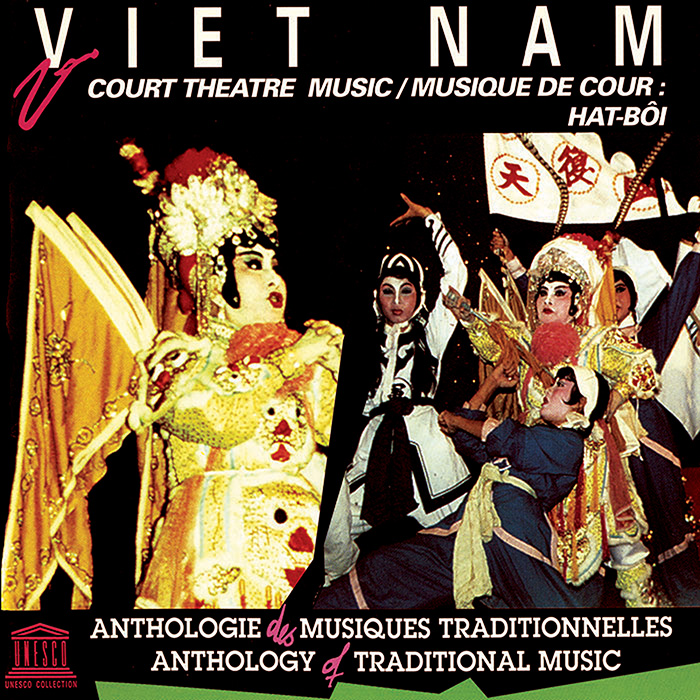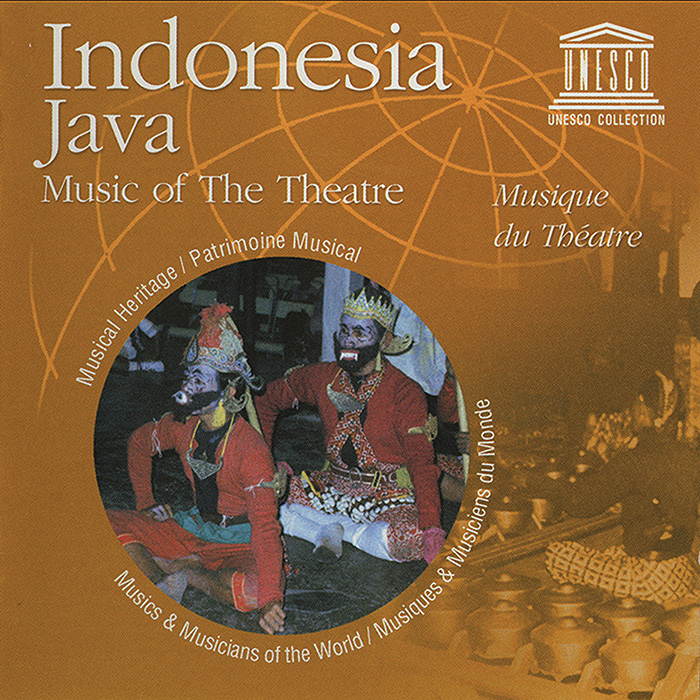-
UNESCO Collection Week 33: Theater Music from Java and Vietnam
This week’s UNESCO releases spotlight music for the theater with albums Viet Nam: Court Theatre Music—Hat-Bôi and Indonesia: Java—Music of the Theatre. Evidence for both theatrical styles extends back to the 14th century, with both reaching their Golden Age in the 19th. Recently, however, they are losing much of their popularity due to the appeal of more modern styles.
GUEST BLOG
By Steven Jacobetz
It is a miracle of our present digital age that a physically disabled person like myself, for whom traveling across one’s own neighborhood is an ordeal, can listen to music from around the world in the comfort of my own home. I am grateful for the opportunities Smithsonian Folkways gives for people with curious ears to explore the great variety of musical sounds in the world, and the UNESCO Collection of Traditional Music is the latest platform on which one can take musical journeys of the mind. I know that I am very unlikely to ever actually be in places like Java or Vietnam, but thanks to Folkways and UNESCO, I have been there musically.
After studying albums of theatre music of Java and Vietnam, both originally released in 1985, I feel an affirmation of the common humanity we all share. The core elements of drama—love, joy, heartbreak, despair—are the same everywhere. Of course theatre dramas are meant to be seen as well as heard, and the audio portion of the performances makes one wish for the whole experience.
Both types of music prominently feature percussion instruments, but in the music of the Vietnamese hat bôi (“masked” or “painted face” theatre) they seem to be used more to accent or punctuate the drama, while the gongs of the Javanese gamelan orchestras have a more melodious and hypnotic effect.
The hat bôi theatre of Vietnam has its roots in Chinese opera, but evolved in ways which are distinctly Vietnamese, as seen in the types of instruments and songs used in performance. This operatic form began in the early 14th century and reached its zenith of popularity in the 19th century before beginning to disappear in the 20th. Fortunately, the reunification of Vietnam in 1975 resulted in somewhat of a revival and allowed the theatrical genre to be studied by interested parties.Listening to Viet Nam: Court Theatre Music—Hat-Bôi, one can easily imagine the dramatic scenarios without being able to follow the dialog. Take, for example, the seventeen-minute excerpt from the play Yên Phi Long tiên chông, which translates to “Princess Yen offers three cups of wine.” The liner notes explain:
To say farewell to her husband O Hac Loi, who is about to leave for battle to avenge the Princess's brother killed on the battlefield, the Princess proposes to offer three farewell cups. The general accepts to taste the wine if she presents it with a long trill of laughter. The Princess forces herself to laugh. She laughs three times, but the last finishes in sobs. They express her sadness at parting time.
Indonesia: Java—Music of the Theatre presents two excerpts that are decidedly more lighthearted in character, with titles translating to “Entertainment on the song of the monkeys,” and “Entertainment for the heart.” The two opposing styles presented here originate from the great rivalry between two royal cities of Central Java: Yogyakarta and Surakarta. Is this not just like the behavior of, say, two rival marching bands in competition, with one always trying to out do the other?Both styles on the album originate around 1890 and are based on Hindu-Javanese legends. The Yogyakarta piece, “Langen mandra wanara” (“Song of the monkeys”), was originally danced exclusively by males who had to perform entirely in a kneeling or crouching position. Eventually, the problem of finding capable performers led to the abandonment of this style until the advent of a mid-20th century revival with suitable adaptations, including female voices where needed. The performance on the album is a concert performance for radio.
The city of Surakarta responded with an all-female cast for “Langen driyan” (“Entertainment for the heart”). The liner notes state, “One should note the special vocal technique of these singers, whose voices, reduced in timbre and slightly nasal in manner, uniquely accompany the mellifluous gamelan instruments; certain moments are charged with intense poetry and a lyricism sensitive in the extreme.”
Unfortunately, even by the time UNESCO issued this album in the mid-1980s, several cast members from this 1968 recording had died, making the album an essential document for preservation efforts. Similarly, at the time of release, the Vietnamese hat bôi style of theatre was in danger of disappearing in favor of a more modern style. This reiterates the importance of preserving the traditions of the past for future generations before they are lost entirely.
Steven Jacobetz, BA Journalism, The College of New Jersey
Past writing credits include album abstracts on the webpages for several classic Folkways Records releases, as well as music reviews for www.allmusic.com and www.music-critic.com.UNESCO Collection Week 33: Theater Music from Java and Vietnam | Smithsonian Folkways Recordings



